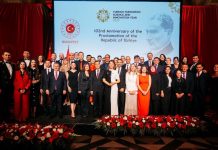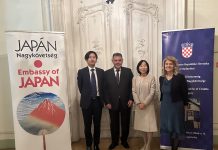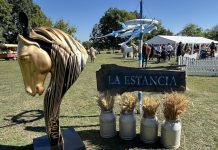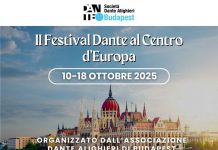“Charm of Seoul – What we wear, where we live”
Edited by Anna Popper
The 150th anniversary of the Museum of Ethnography in Budapest was celebrated in 2022 with the inauguration of its new home in the City Park. This very spectacular building is considered one of the most modern ethnographic museums in the world. (After winning the Award for Best European Public Building, the planned new Ethnography Museum in Budapest, being constructed as part of the Liget Budapest Project, has also won the “World’s Best Architecture” Prize at the International Property Awards in London.)
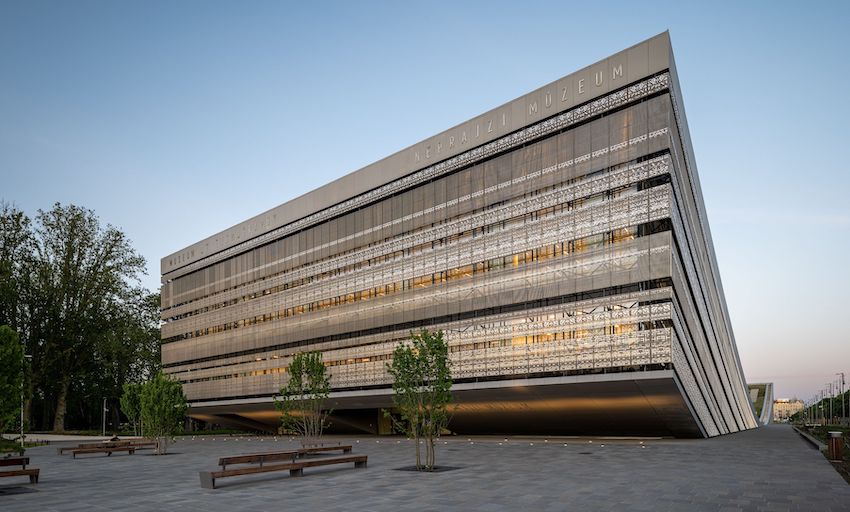


The museum is not only known for its impressive collection of 225,000 ethnographic objects but also houses valuable photographic and film materials, manuscripts and folk music recordings. The permanent exhibition allows visitors to explore a part of the museum’s extensive richness.

The Museum of Ethnography in Budapest hosted its first guest exhibition in cooperation with The Seoul Museum of History, led by Acting Director, Ki Bongho, thereby contributing to the international dimension of the museum’s profile.
The exhibition entitled “Charm of Seoul – What we wear, where we live” features 250 exquisite objects and numerous photos, providing a glimpse into the history and modern daily life of Seoul, the capital of South Korea, over the past 100 years.
Topics focusing on clothing traditions, interior design and housing culture highlight the diversity of Seoul’s cultural heritage. The iconic artifacts provide an understanding of Korean everyday life and celebrations, as well as the values and symbols that pervade the whole society, represented by Korean Confucianism. While Korean society has evolved, the impact of Confucianism on Korean culture, ethical values, family relationships and social structure is still evident today.


The opening ceremony of the “Charm of Seoul” exhibition on the 17th October 2023 was attended by Hungarian officials, members of the diplomatic corps, and representatives of the social and cultural life.

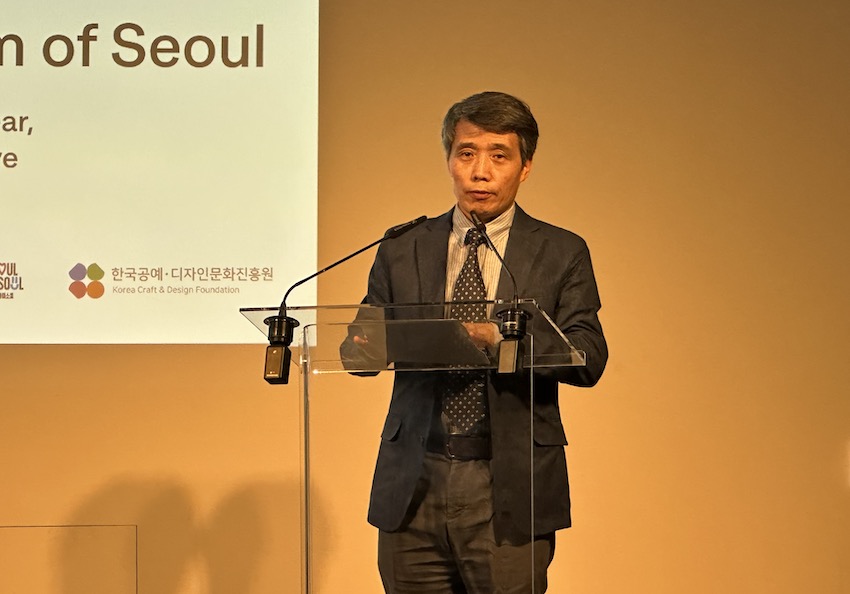
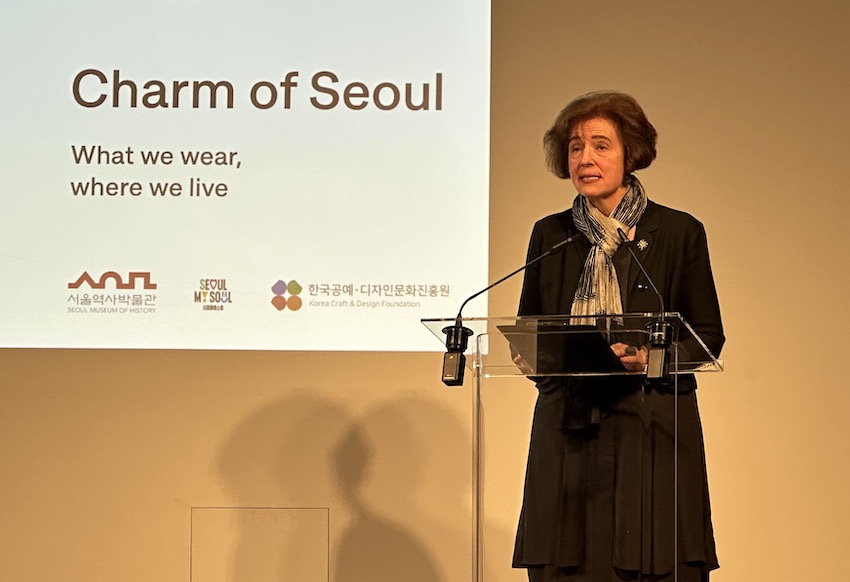
On behalf of the Hungarian government, the Minister of Culture and Innovation, Mr. János Csák spoke about the strong economic cooperation between the two countries, adding that this exhibition in Budapest, the Hungarian photo exhibition held in Seoul, and the Hungarian Cultural Season in Korea a few years ago, are just the beginning of a process of elevating the cultural ties to the same high level as the Hungarian-Korean economic relations.
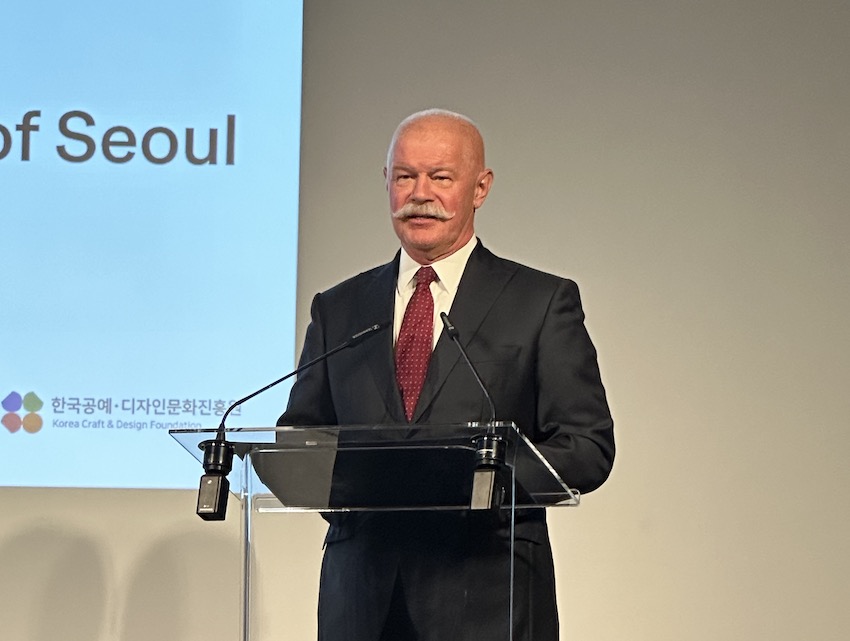
In his speech H.E. Hong Kyu Dok, Ambassador of the Republic of Korea to Hungary, pointed out that Seoul residents have shown increasing interest in Hungary, thanks to the exhibition about Hungary in Seoul. He emphasized that economic relations between the two countries has developed dynamically, and South Korea has been Hungary’s largest investor in recent years, with more than 300 Korean companies operating in Hungary. This strong bond will continue to strengthen in the future and contribute to more active personal connections between Korean and Hungarian peoples.
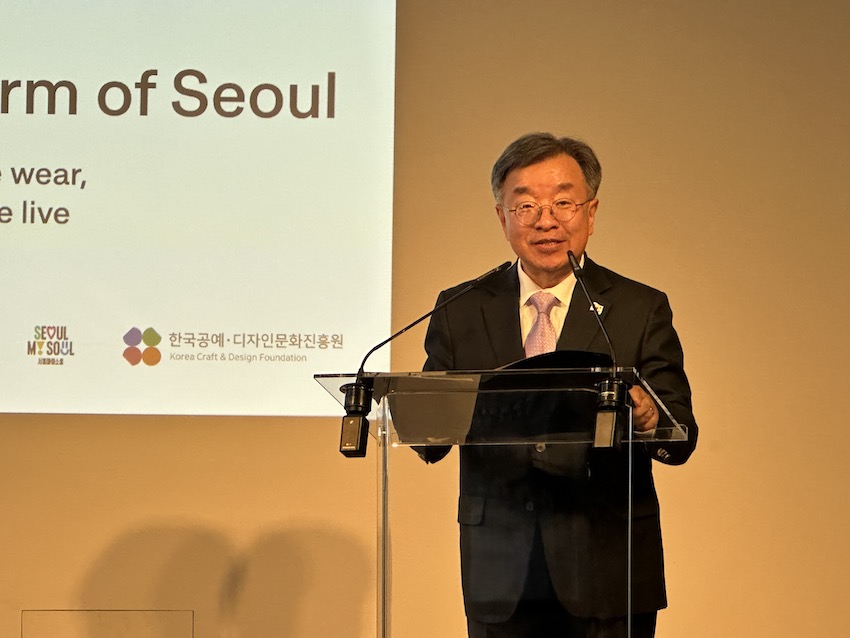
Director of the Ethnographic Museum, Mr. Lajos Kemecsi stated that the exhibition aims to showcase the traditional clothing and home culture of the Korean capital, Seoul, and preserve this national heritage. “We hope to provide insight into the beauty of the fascinating Korean way of life, while also telling the story of the coexistence of traditional and contemporary culture” – he added.
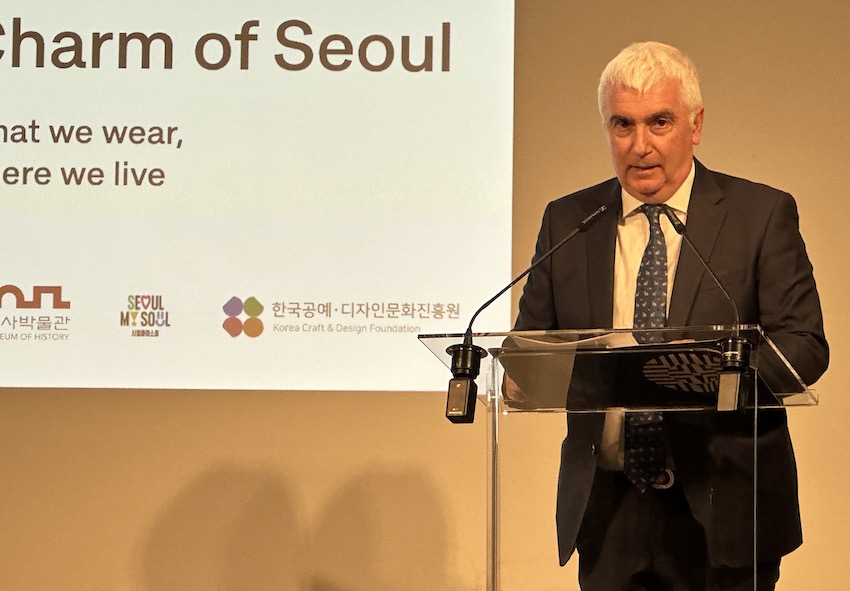
About the Seoul Museum of History exhibition “Charm of Seoul – What we wear, where we live”:
This exposition follows the reciprocal showcase of the “A Day in My Life: Photos from Hungary” exhibition, which was displayed in the Seoul Museum of History from June to September 2022 in collaboration with the Museum of Ethnography, Budapest.
Featuring a wide range of traditional and modern hanboks, the first section of the exhibition “Charm of Seoul” offers a fascinating exploration of Korean clothing traditions. These are historical and cultural costumes (including masterpieces made of luxurious fabrics with decorative elements and embroidery that contribute to their distinctive appearance) that were commonly worn in Korea, also as a formal attire before the widespread adoption of Western-style clothing.
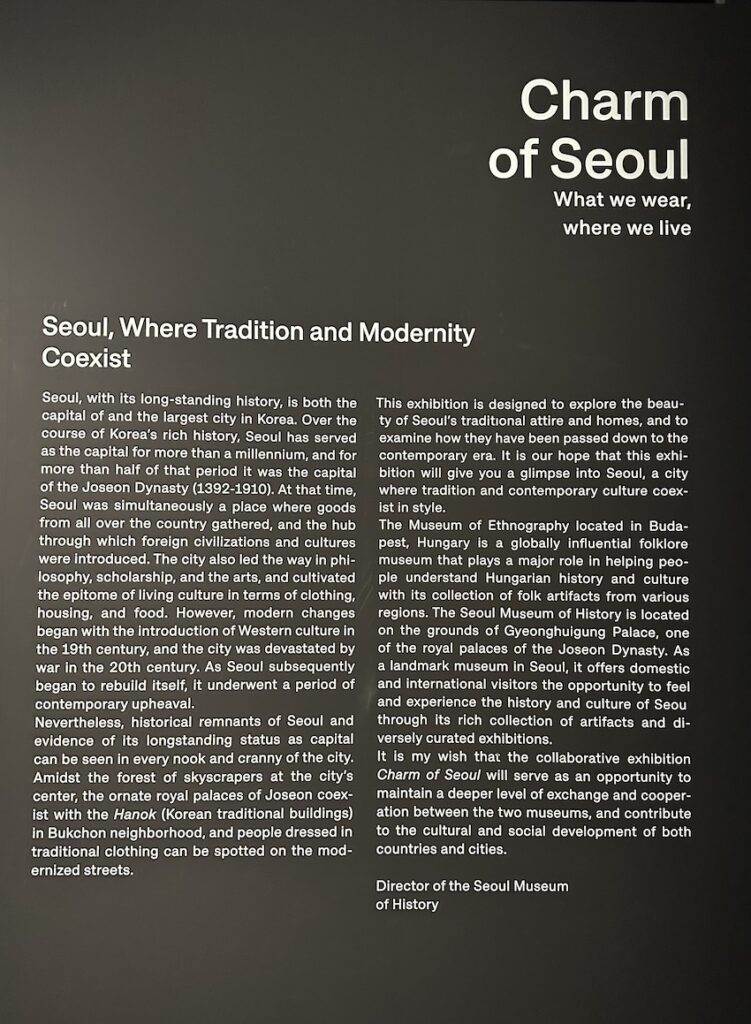


Traditional craftsmanship and attention to detail in fabric choice are integral to the artistry of creating Hanbok, which are often accompanied by various accessories that enhance the overall look. The variations of hanboks in style and colour (colours often have symbolic meanings related to life events and emotions) are based on the wearer’s gender, age, and social status. In addition, a spectacular selection of modern designer pieces are on display, inspired by the traditional ensemble, reflecting the ongoing influence of hanbok design, bridging the gap between tradition and modernity. Visitors can learn about the key accessories of traditional Korean attire that play a crucial role in completing the hanbok ensemble, such as the hat (gat) for men, and understanding their significance gives a deeper appreciation of the cultural and aesthetic aspects of Korean fashion.
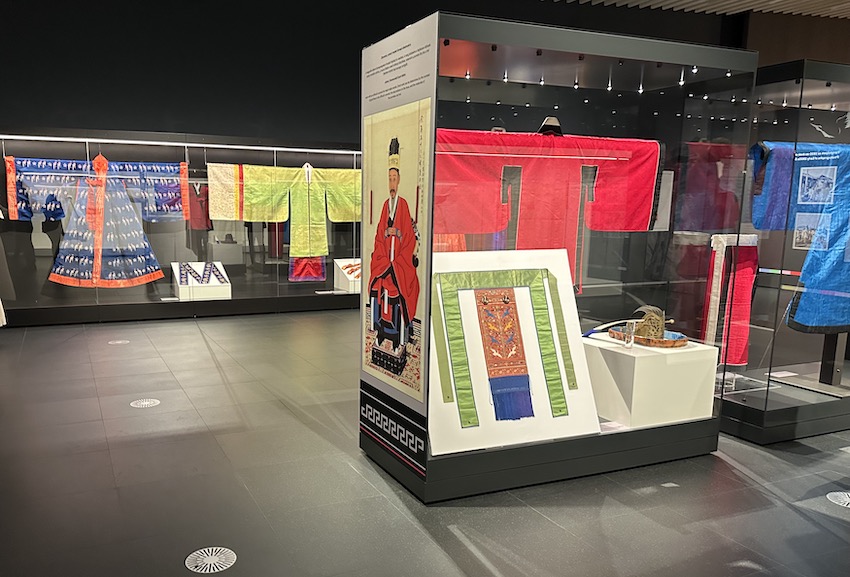
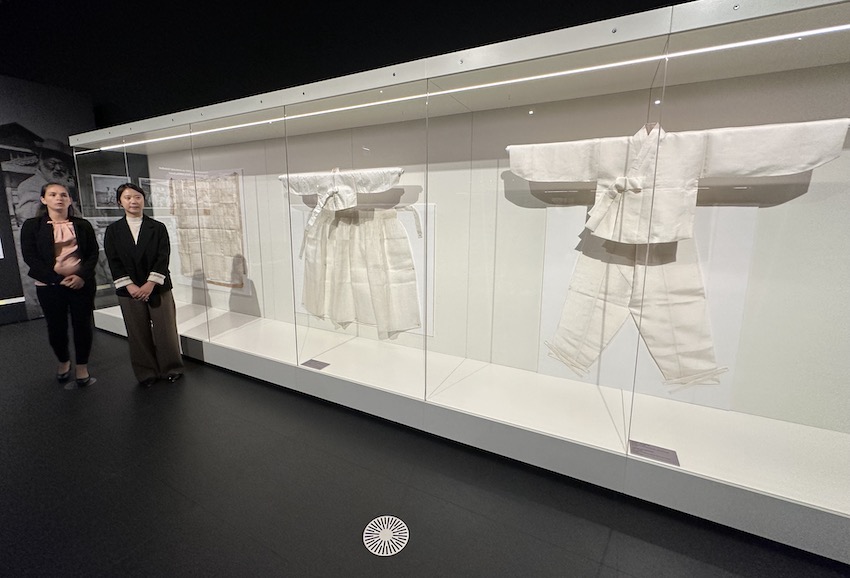
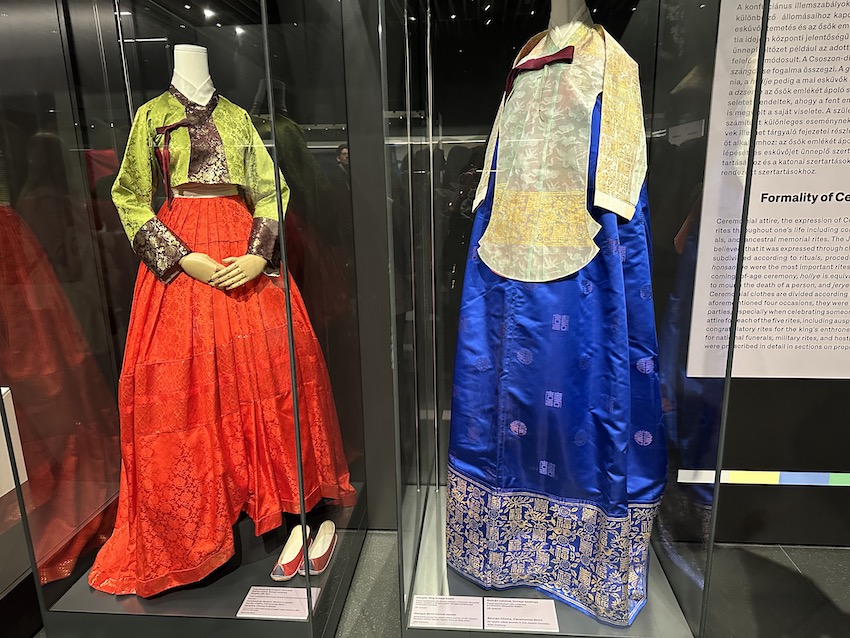
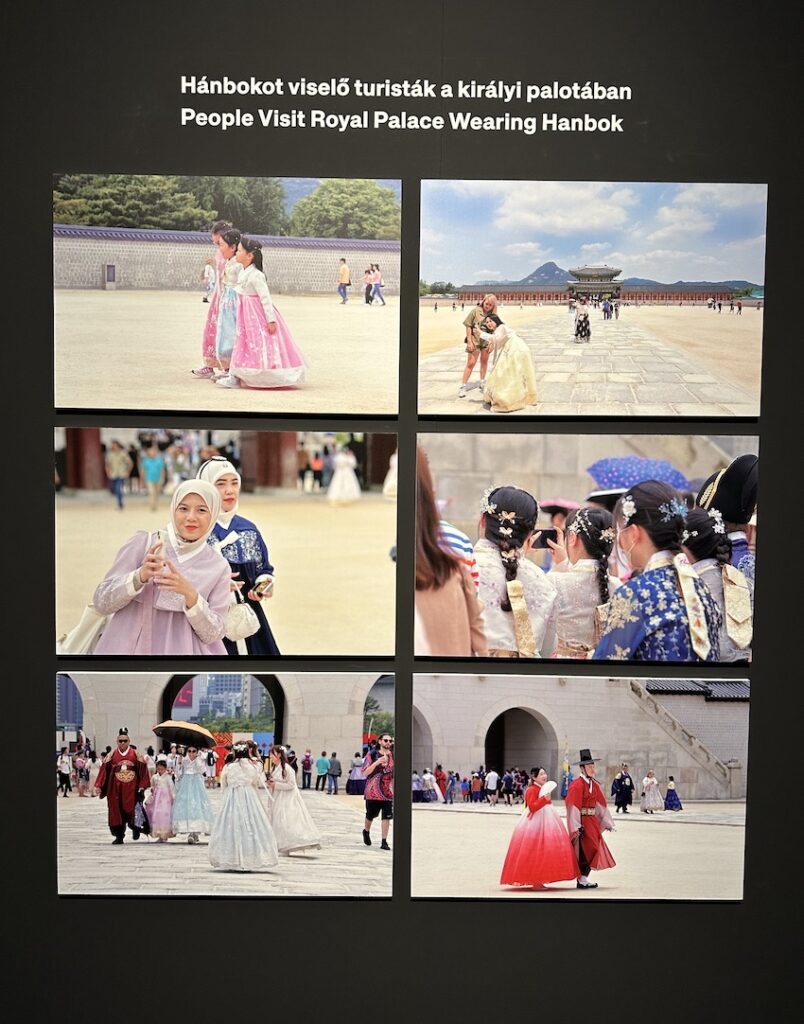
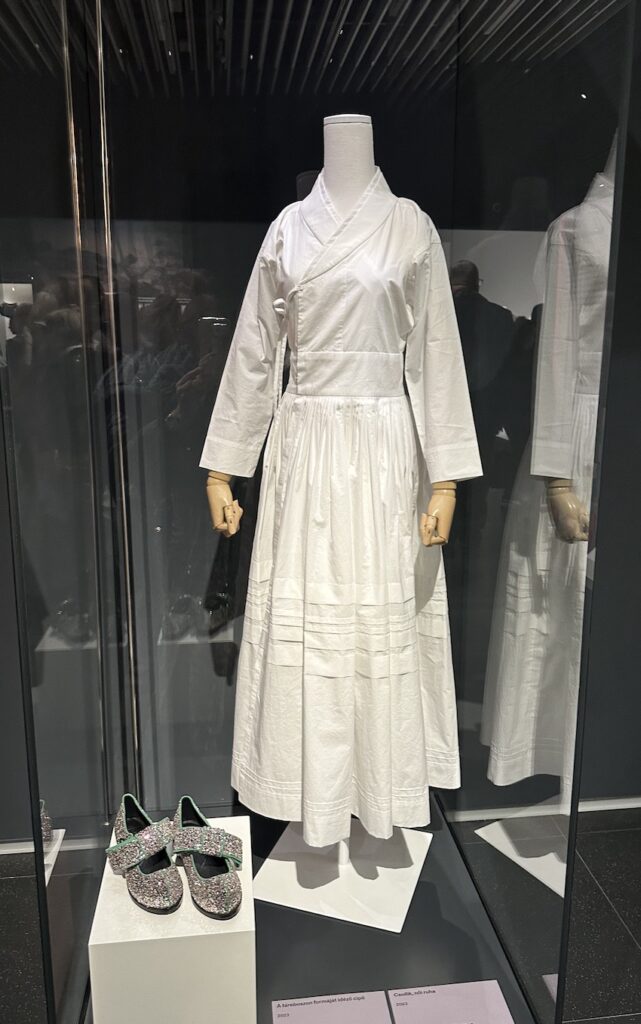
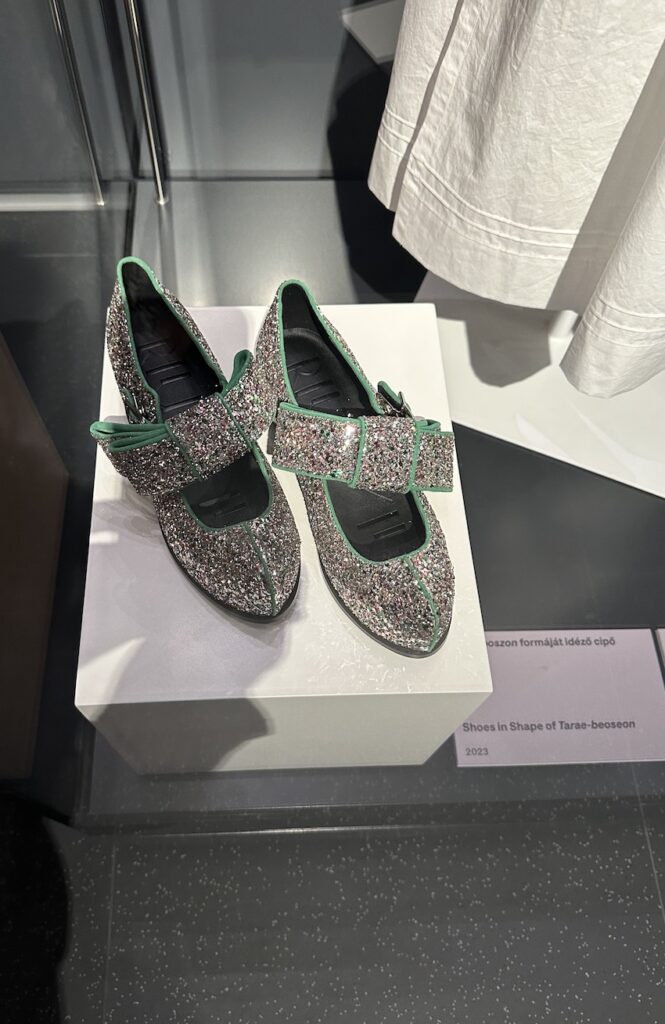
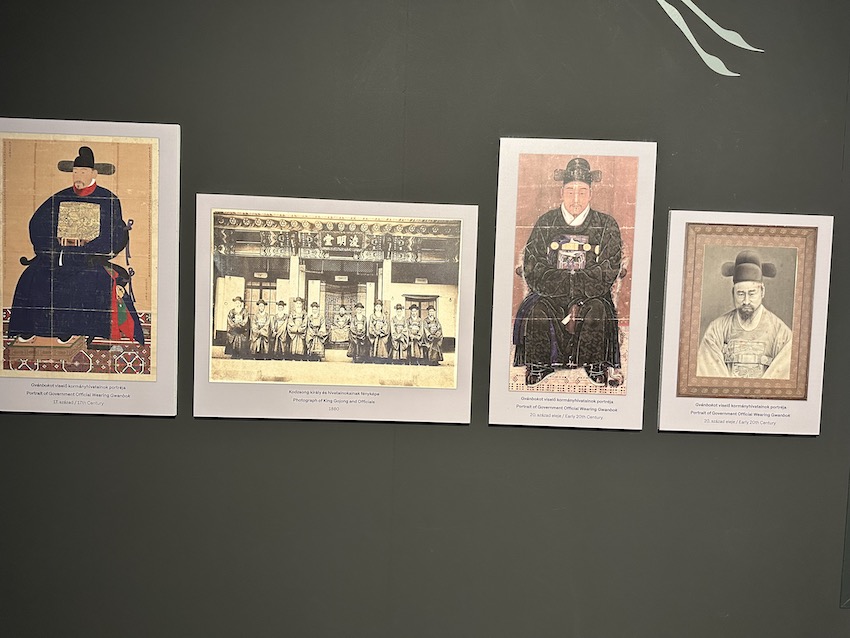
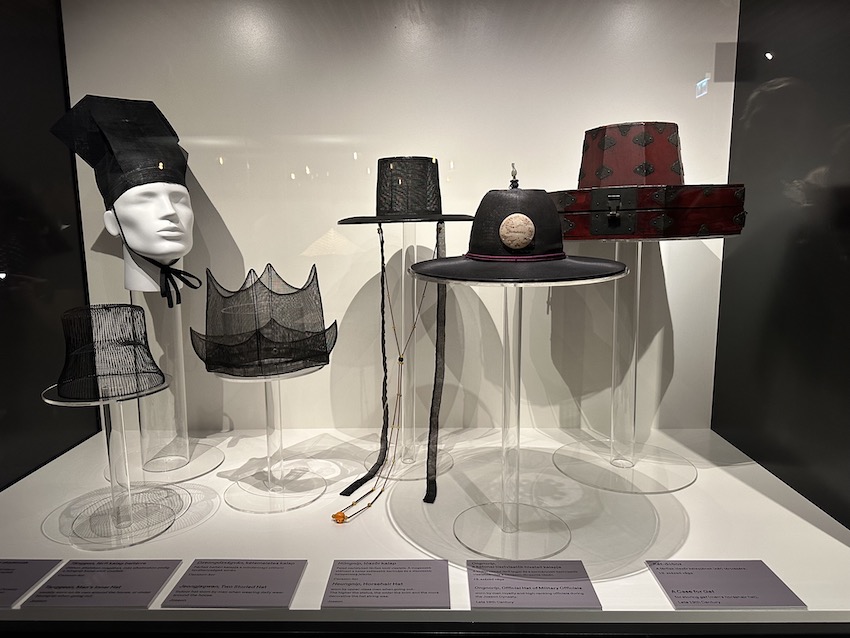
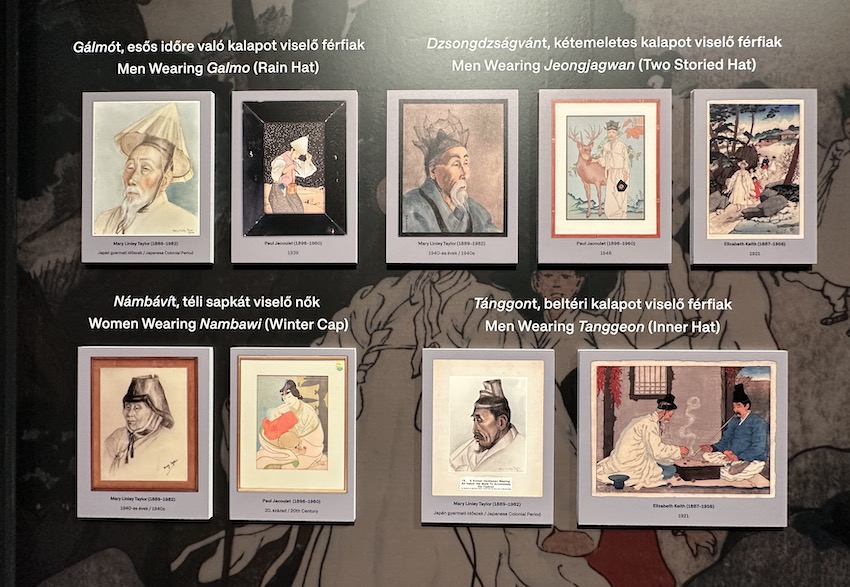
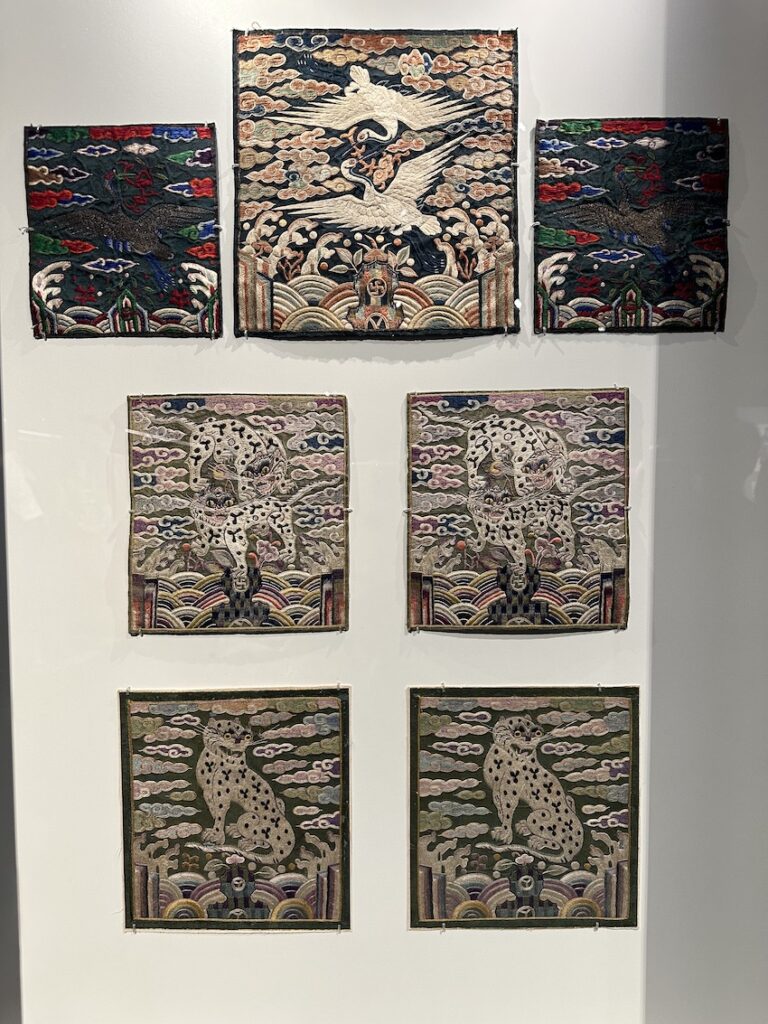
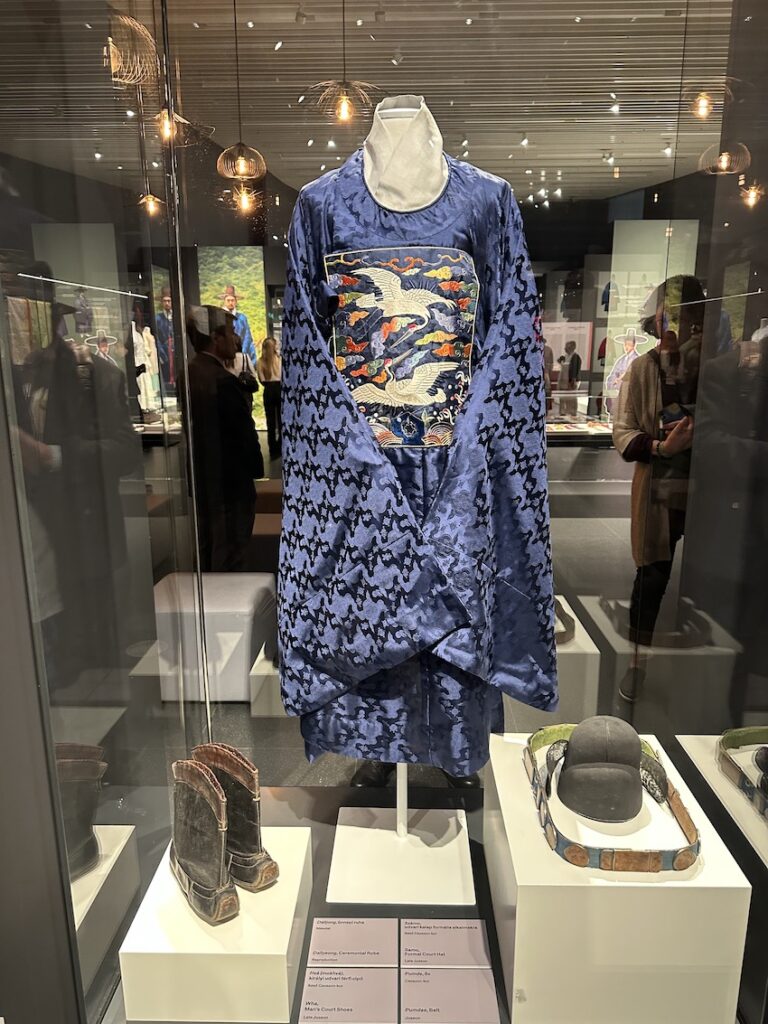
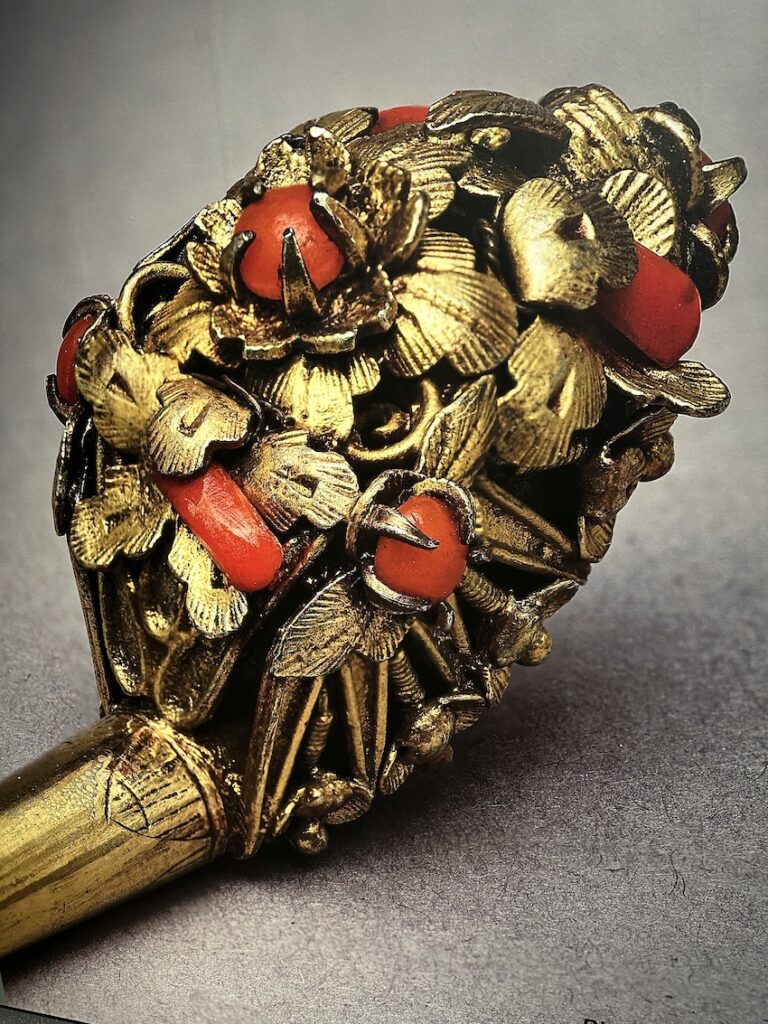
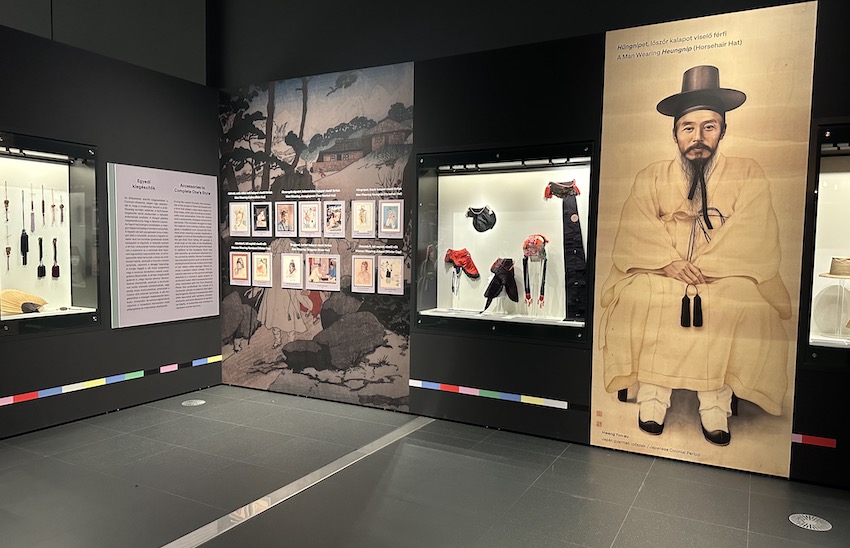
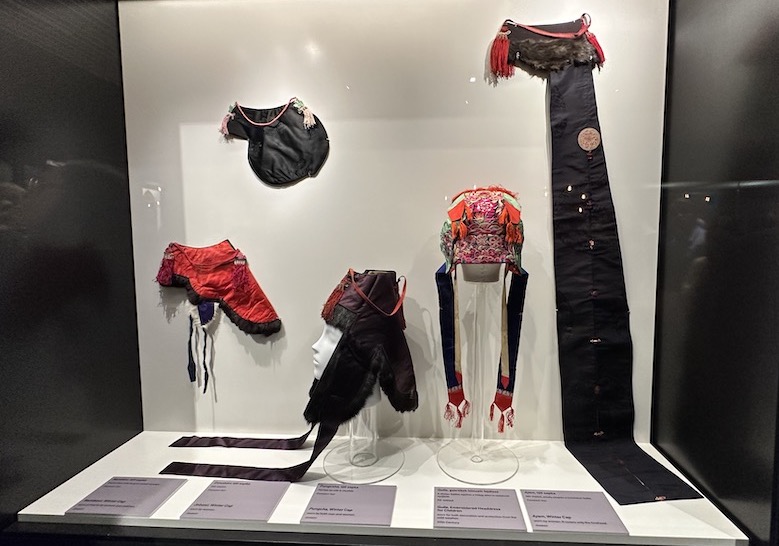
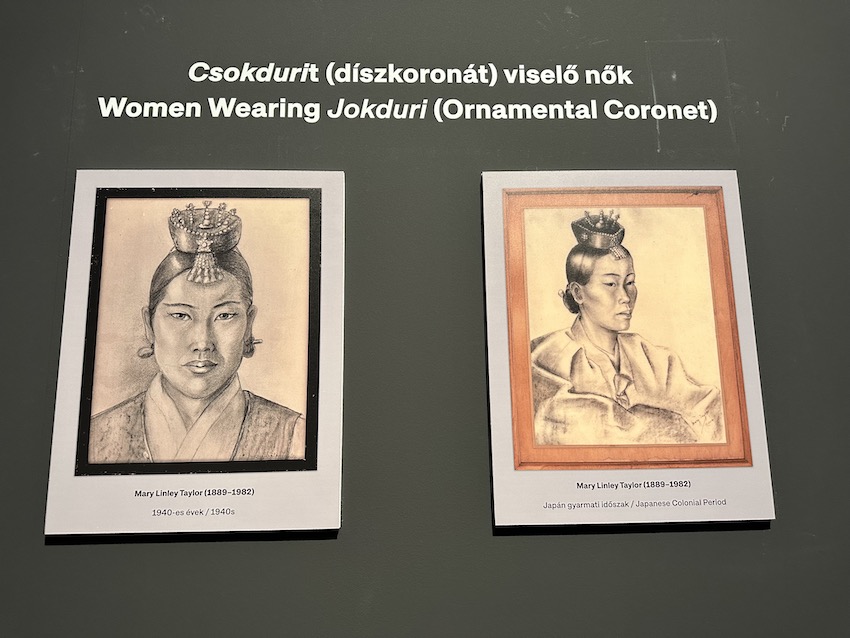
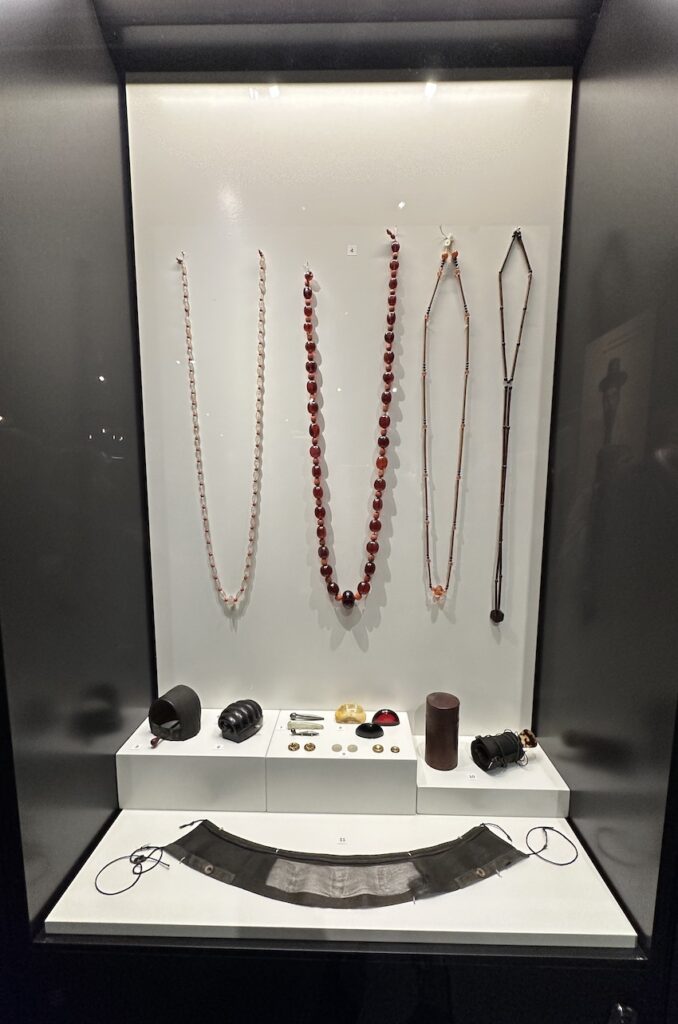
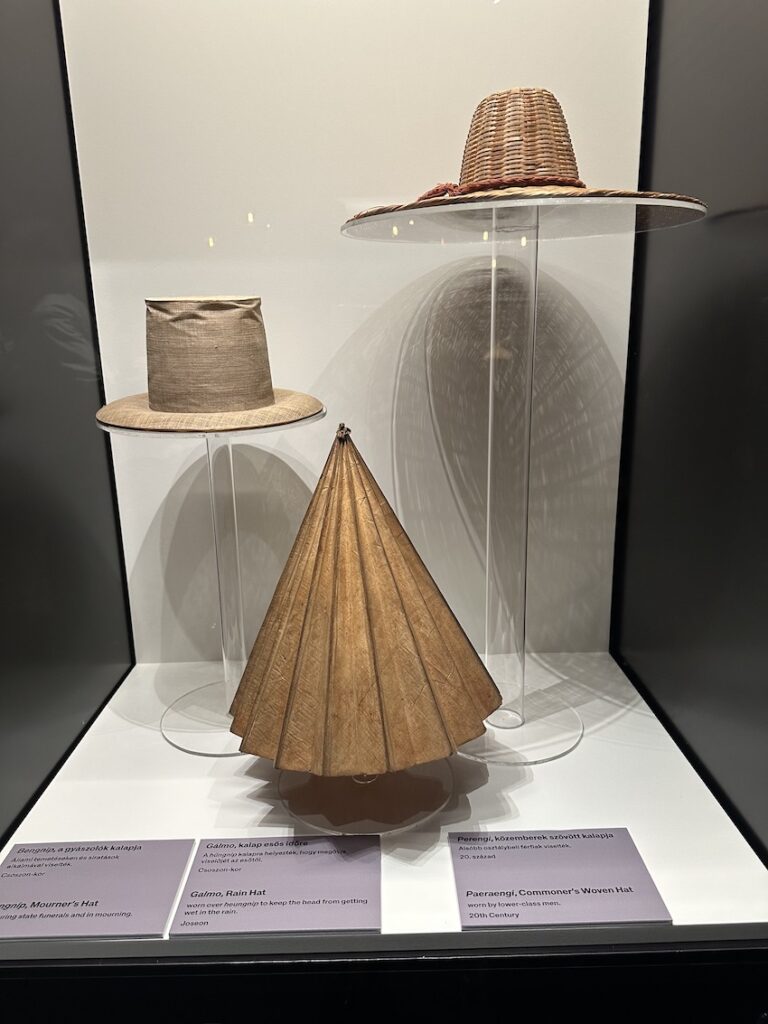
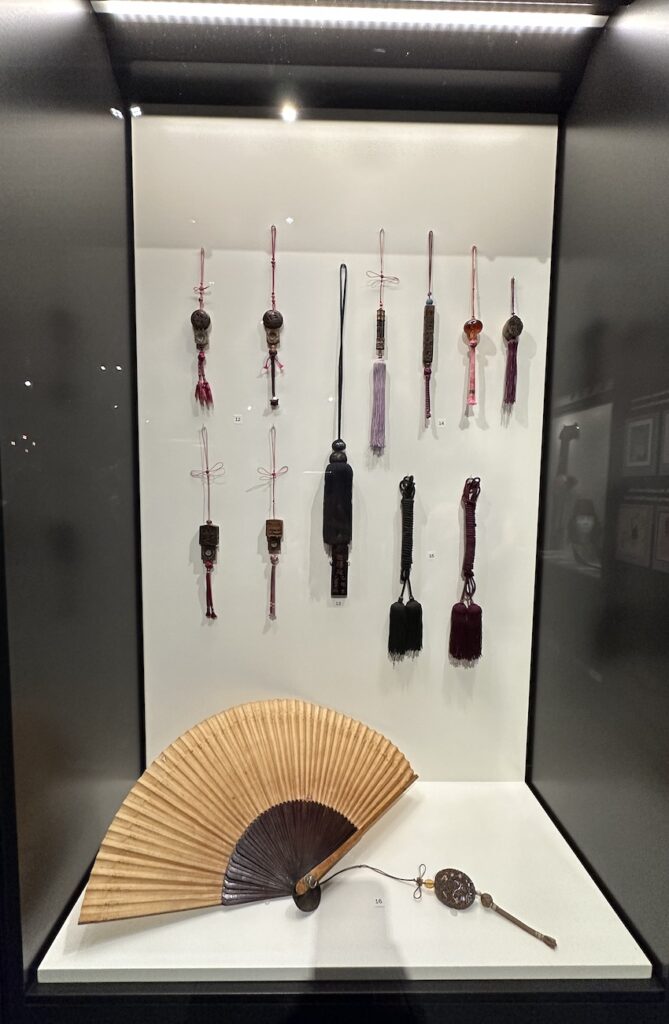
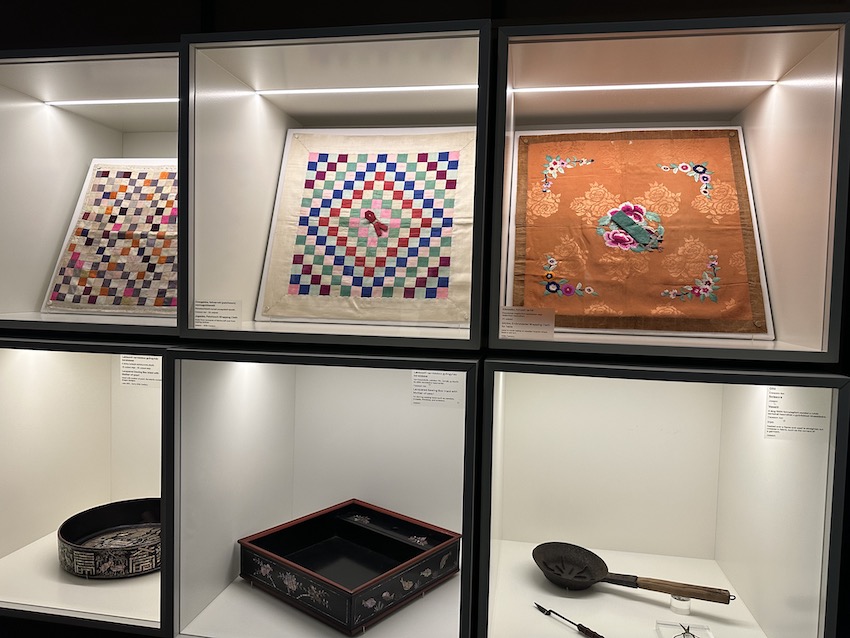
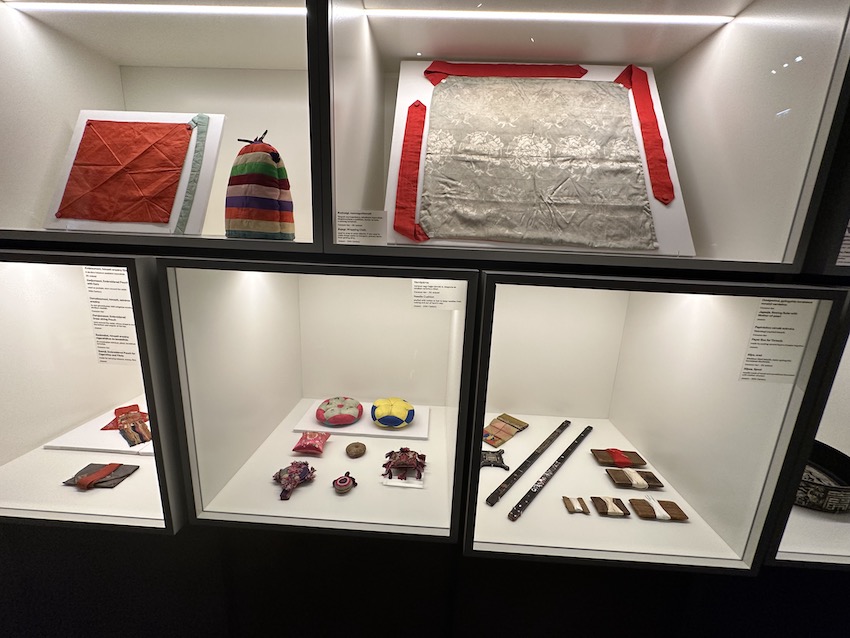
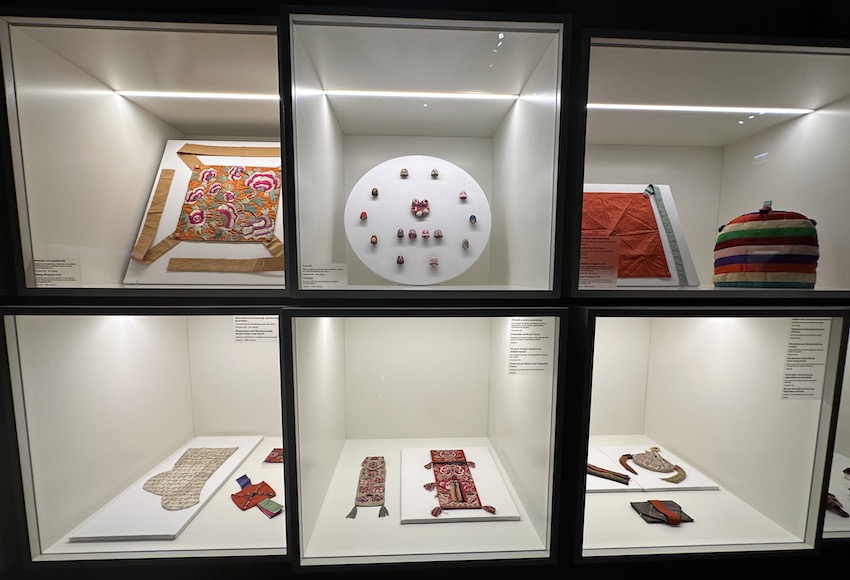
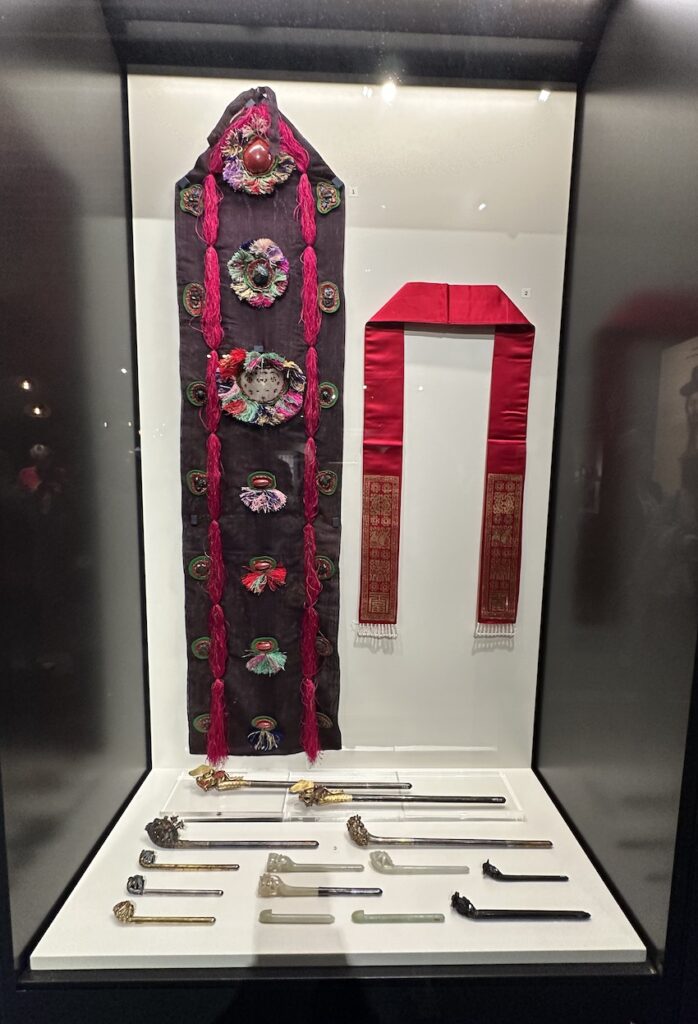
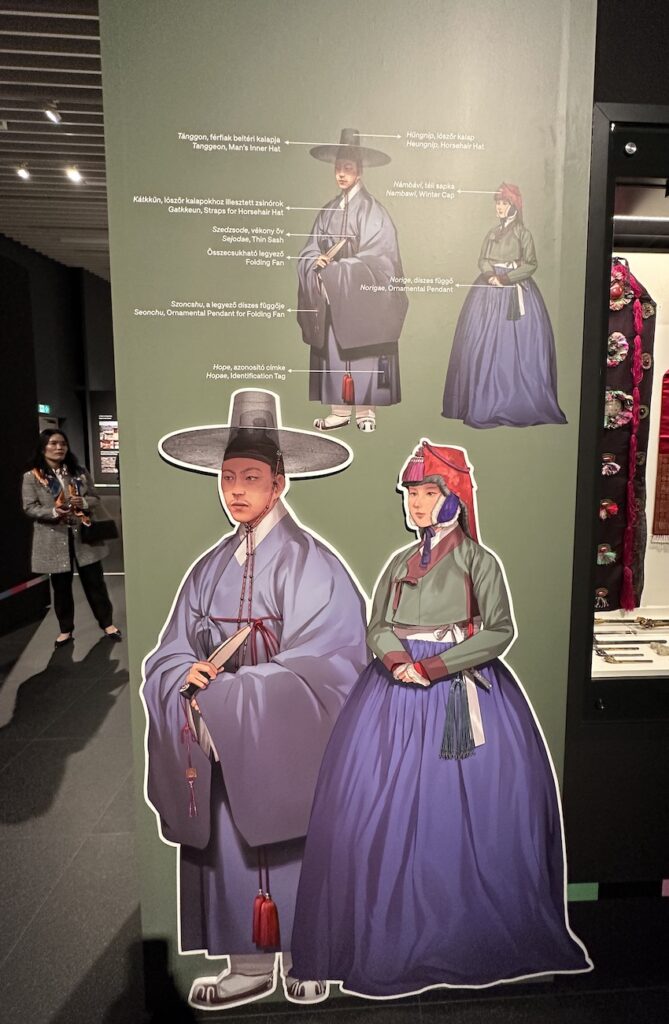
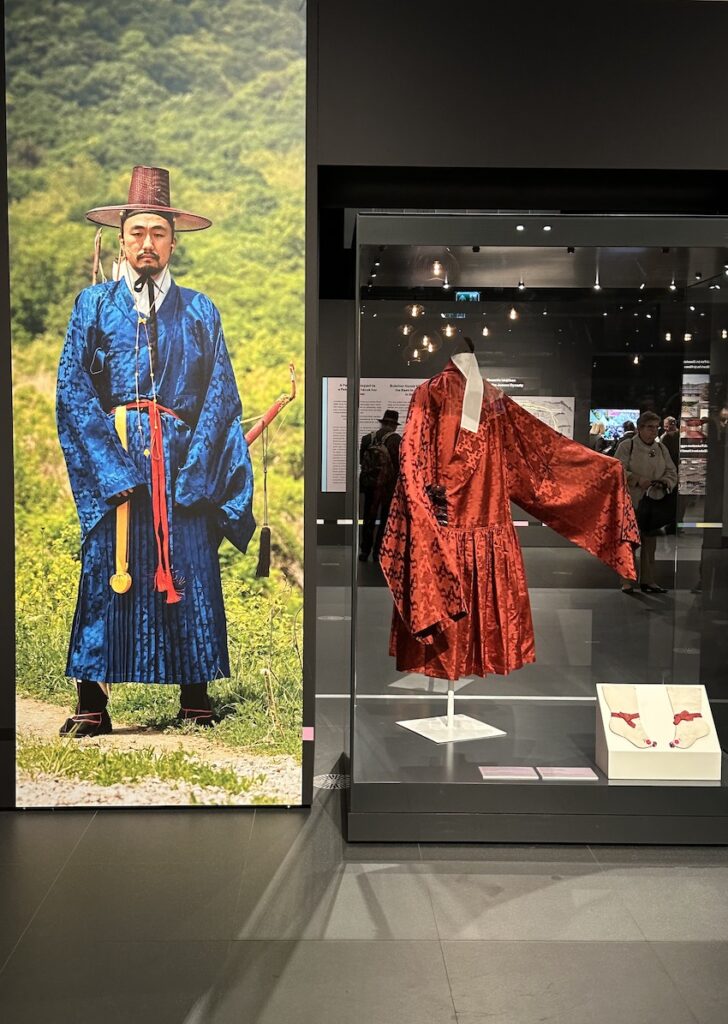
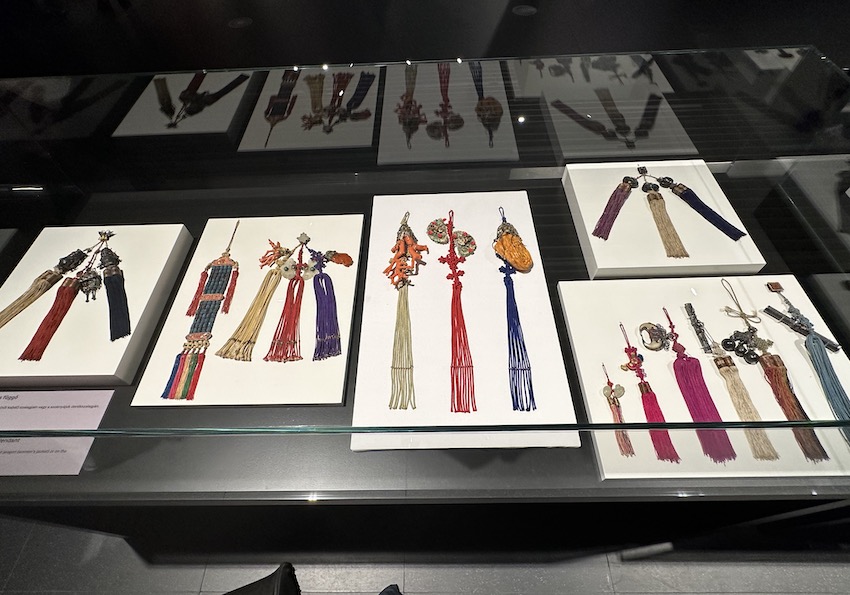
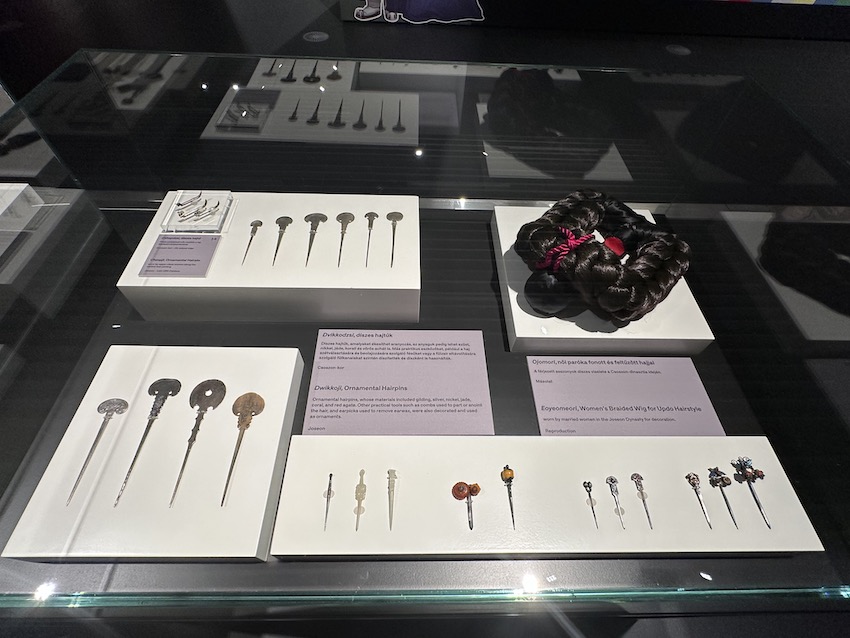
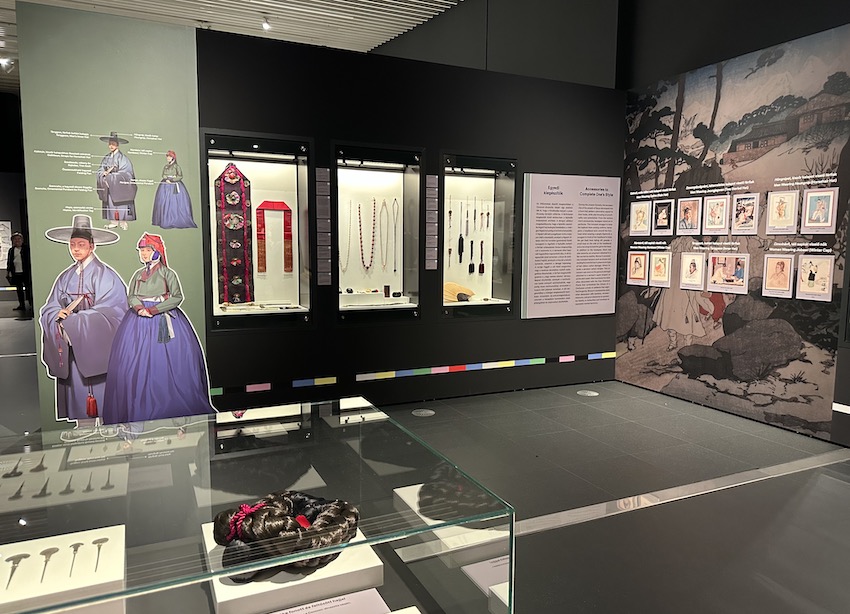
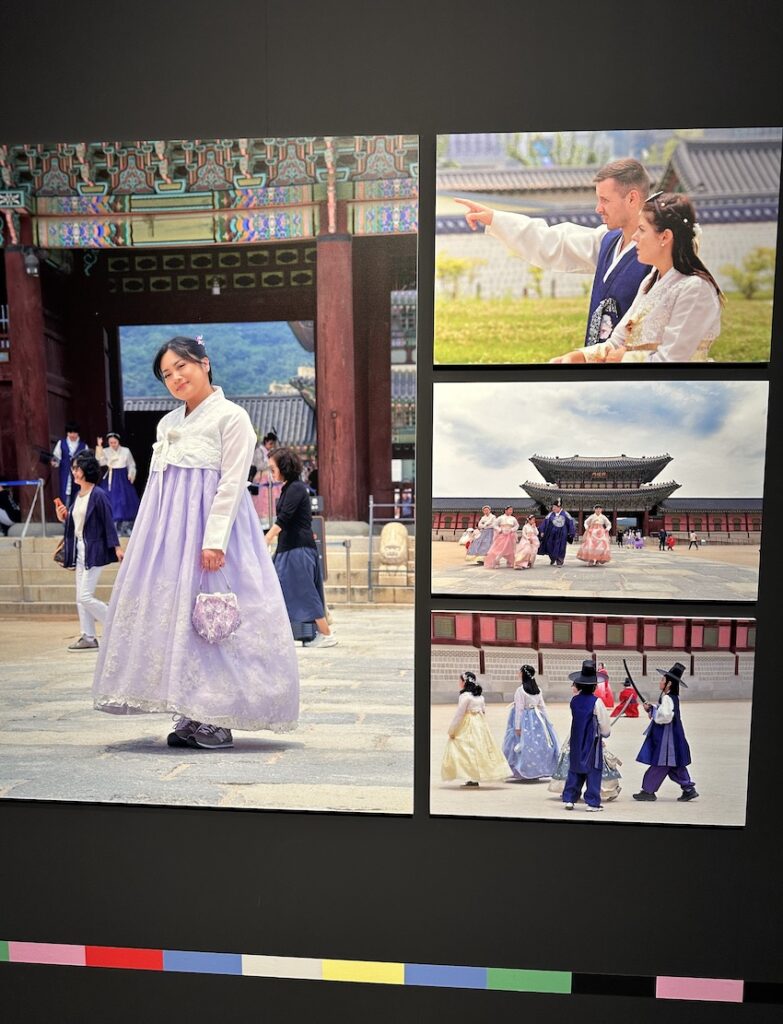
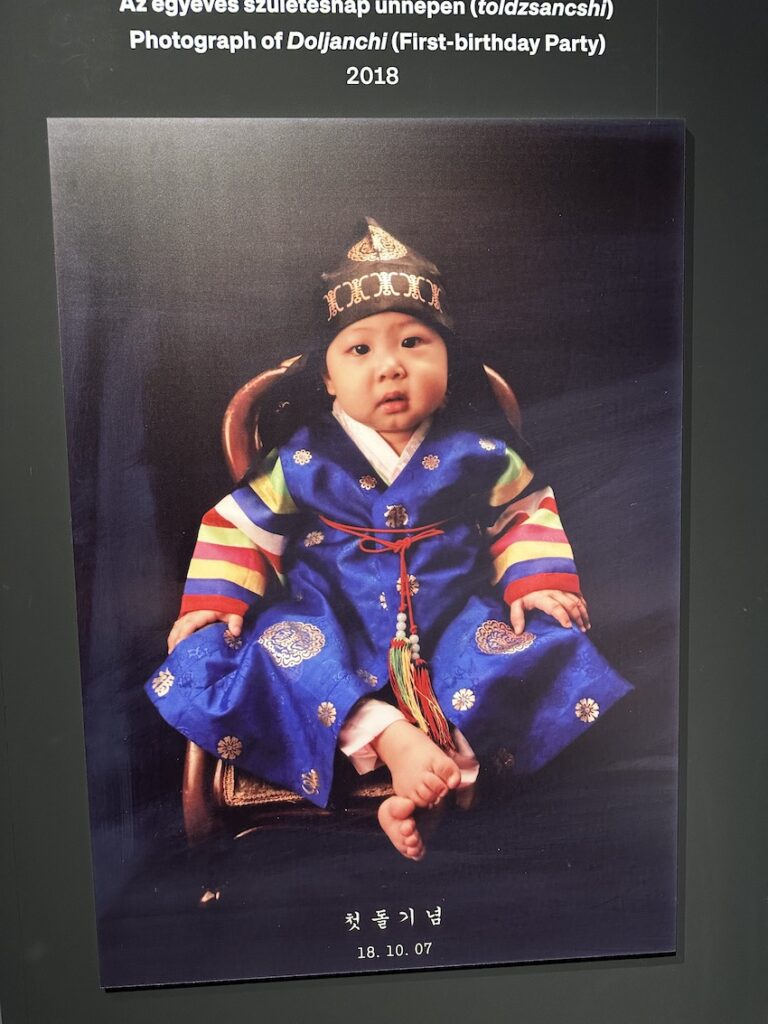


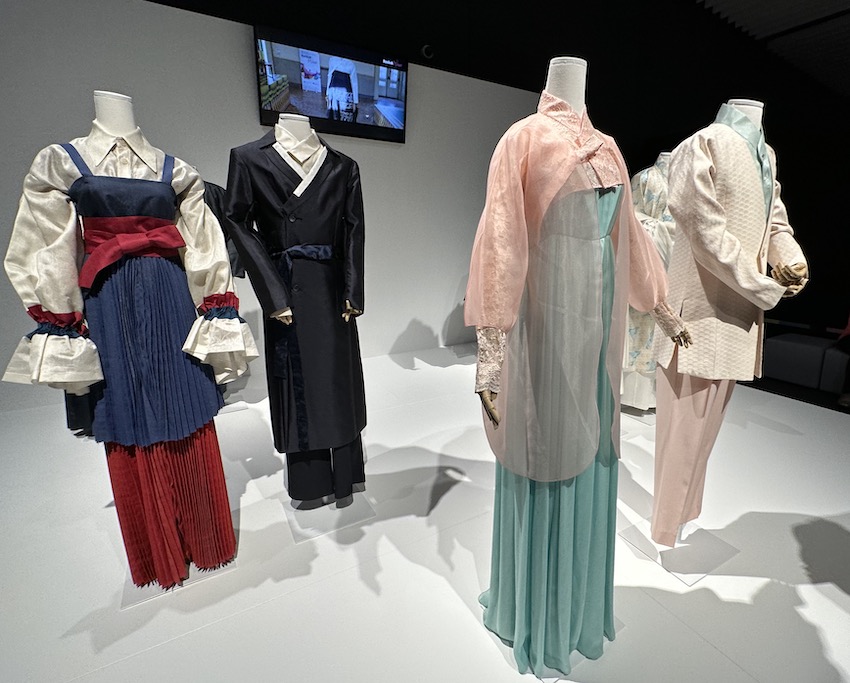
Another exciting section of the exhibition is dedicated to the Hanok, a traditional Korean house, that showcases the country’s unique architectural techniques and style. The emphasis on harmony with nature and the environment reflects a deep connection to the surroundings, created in harmony with nature and the environment. Due to its advantages, it is still used in Korea today despite the prevalence of modern buildings, testifying to the enduring value and functionality of these structures. Preserving traditional architecture can contribute to a sense of cultural identity and continuity. The exhibition also highlights the difference between male and female spaces with specific design considerations for different gender roles and activities. Understanding these nuances adds another layer of cultural insight.
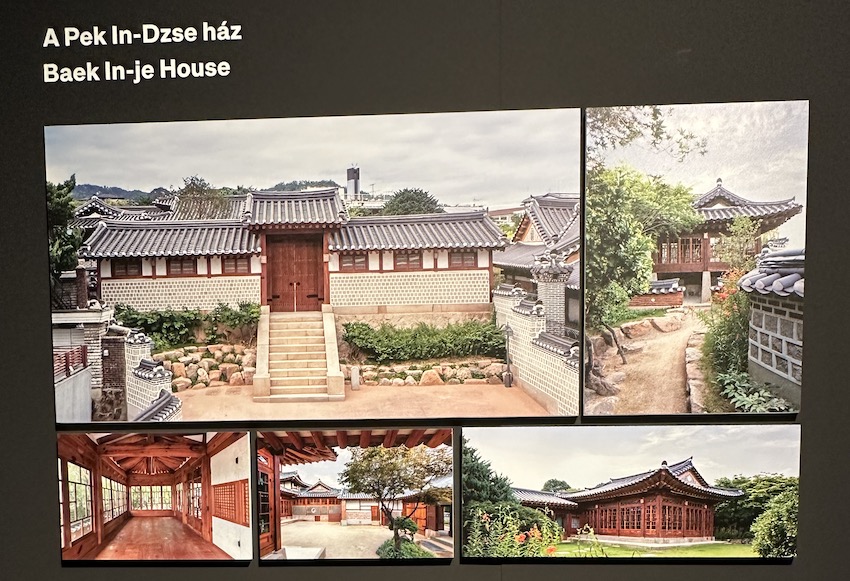
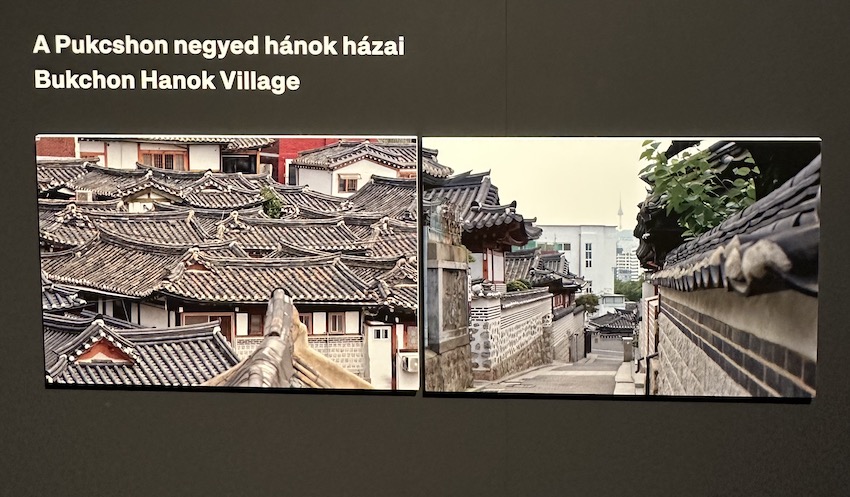
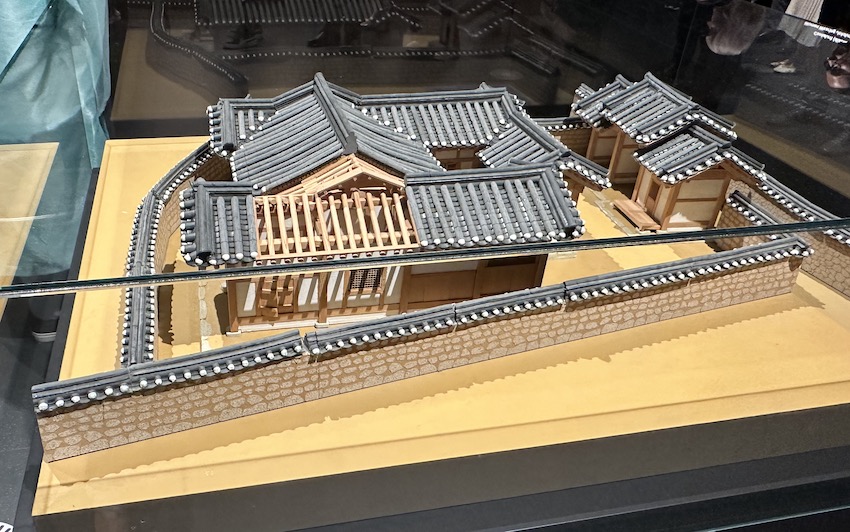
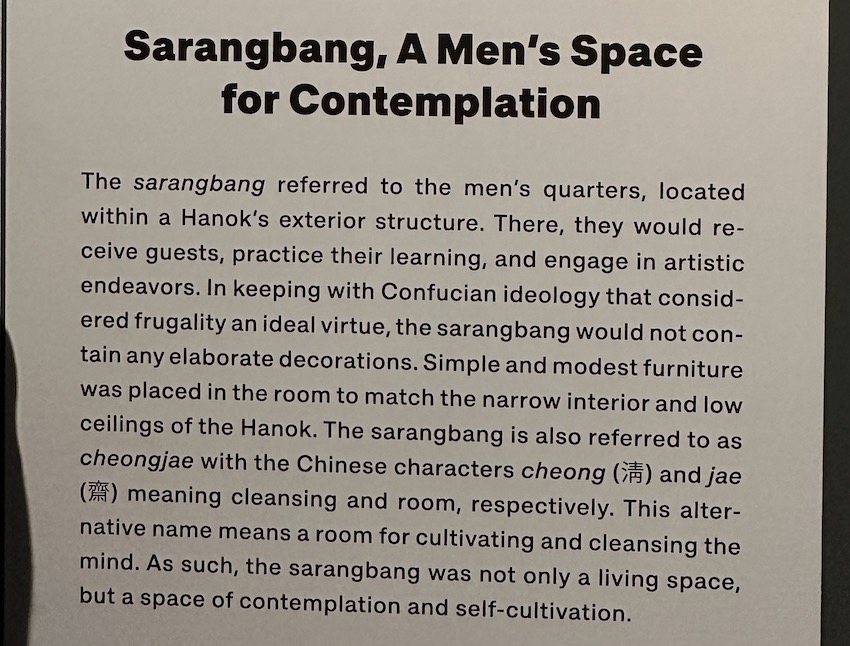

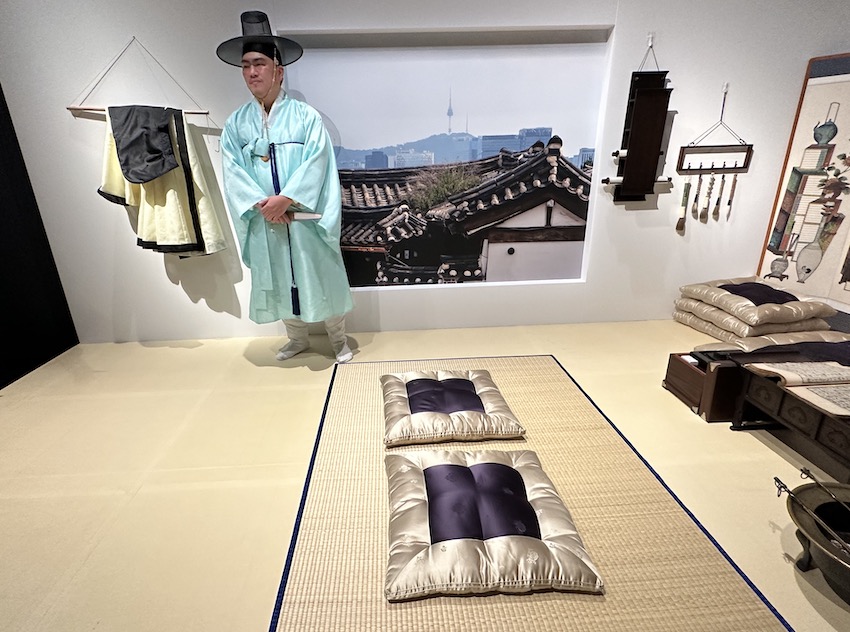

Seoul’s rich history as the capital of South Korea is indeed captivating. The longevity of its status, particularly during the Joseon Dynasty (1392-1910), left a profound impact on the city’s cultural, historical and architectural landscape. During these 500 years, Seoul was the centre where wealth from all over the country was gathered and through which foreign civilisations and cultures could be explored. It is fascinating to imagine Seoul as a leader in philosophy, science, arts, and even everyday aspects of life like clothing, dining, and housing.
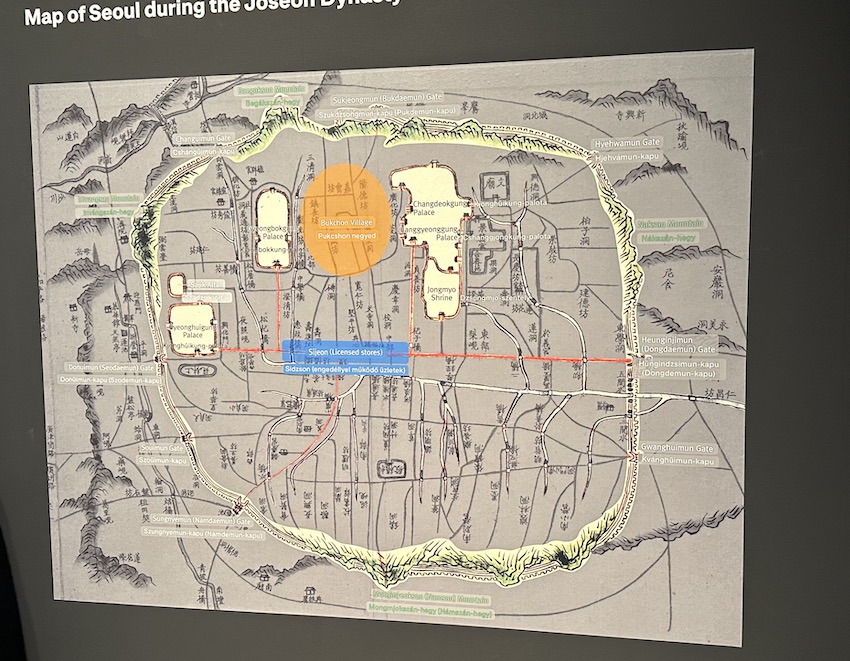
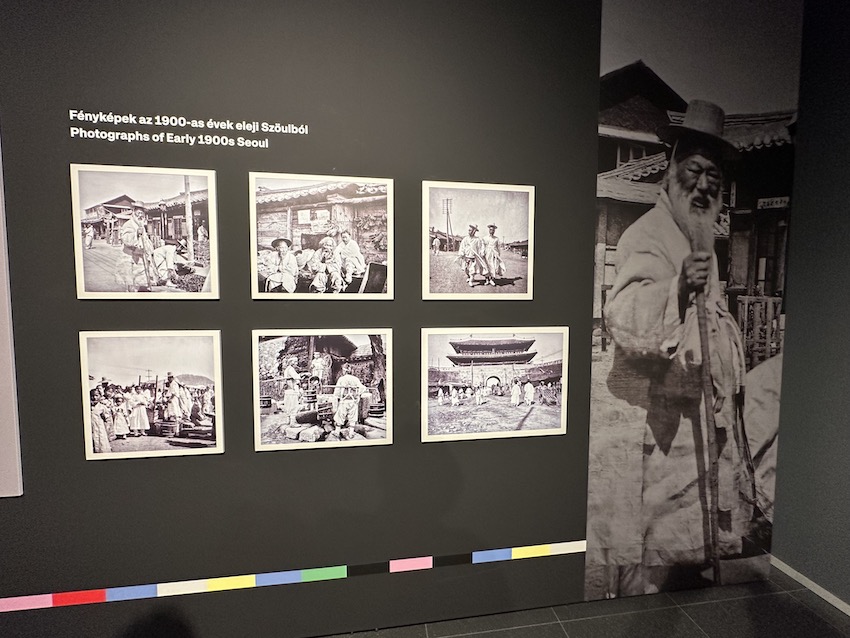
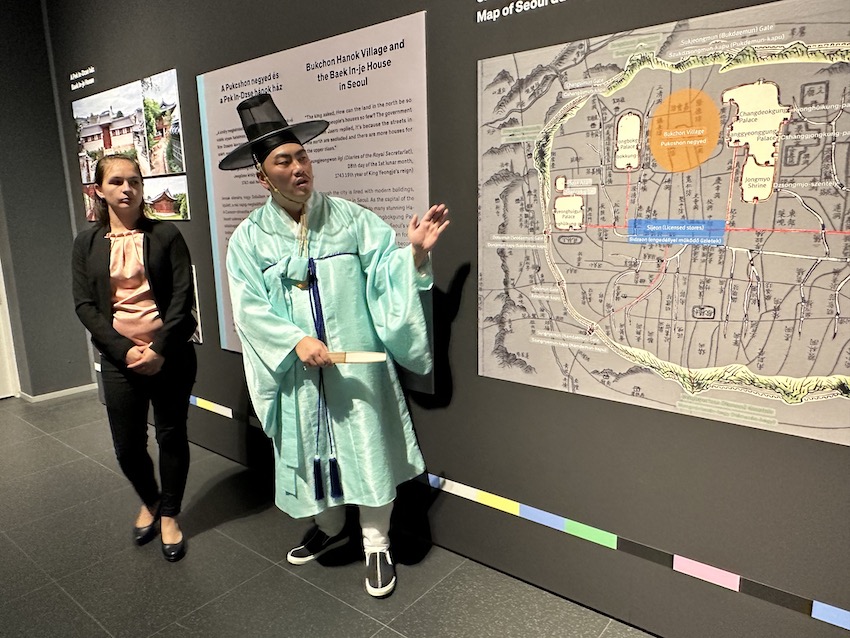
The arrival of Western culture in the 19th century and the subsequent challenges, including severe war damage in the 20th century, speak to Seoul’s resilience and ability to adapt to changing circumstances. The reconstruction efforts not only rebuilt the city but also transformed it into a modern metropolis with skyscrapers alongside historical monuments, royal palaces and traditional hanok houses.
The presence of historical and contemporary elements in Seoul is a testament to the city’s ability to blend its rich heritage with the demands and influences of the present time. This fusion is vividly illustrated by the sight of people in traditional costumes and those admiring modern Korean fashion on the streets of 21st century Seoul. This balance between preserving historical roots and embracing modernity is a compelling aspect of the city’s identity that gives Seoul its unique charm. Cities that manage this delicate equilibrium often showcase a rich legacy of traditions, history and contemporary innovation. Seoul is a great example of a city that has successfully navigated this balance, becoming a vibrant and dynamic cultural hub that attracts both residents and visitors from around the world.
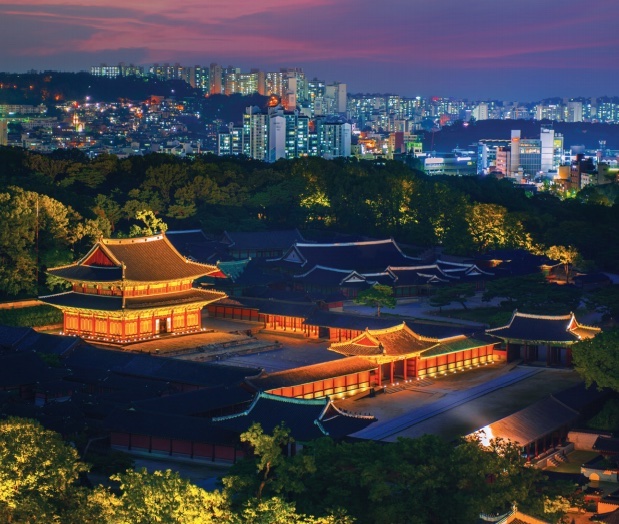
The exhibition “Charm of Seoul – What we wear, where we live” is open to visitors from 18 October 2023 to 18 February 2024 in Budapest / Hungary.
Source: Embassy of South Korea in Budapest, and The Museum of Ethnography in Budapest

